Please Note: Firefox and some other Search Engines may not be suitable
Use Google Chrome for this Web Page to load perfectly!
Please Note: All ssMaritime and other related maritime sites are 100% non-commercial and privately owned, thus ssmaritime is NOT associated with any shipping company or any other organisation! Although the author has worked and been involved in the passenger shipping industry for well over 60 years, but due to his old age and poor health, he was forced to retire. Yet, he has completed well over 1,435 Classic Liners, Passenger-Cargo Liners as well as humble converted C3 converted Migrant Liners, which has transported countless thousands of folk to the new world, as well on vacations’. I trust the features online will continue to provide Classic Liner and Ship enthusiasts both the information they are seeking, but more so provide a great deal of pleasure and relive many happy memories!
Normandie-Third-2BC-a.jpg
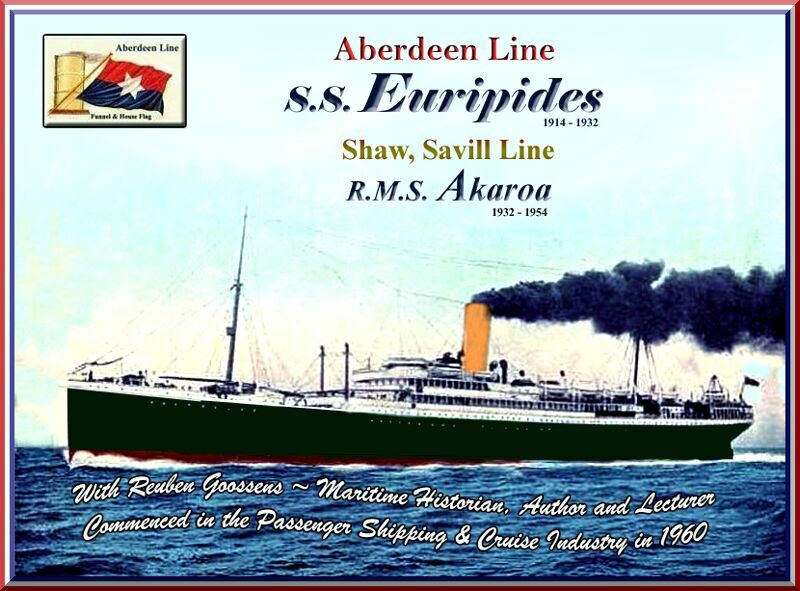
Postcards, photographs & other images are either from the author’s private collection or from my supporters.
Thus a very thank you to three very special ssmaritime supporters for sending me their wonderful
photographs & images for I could not have completed this feature to this point.
I am
sorry but some of the images shown may not be of the highest quality, but they
are the best that were available
Introduction in Brief:
The S.S.
Euripides was a
*********************
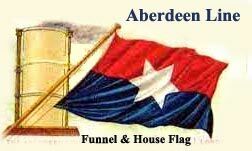
Her Construction & Launching:
The “Euripides” was laid down at the Harland and Wolff Yard N° 439 in 1913, and launching her on January 29, 1914 and completing her on June 6.
On June 14, she departed with a large party of officials and media and other guests for her Sea Trials, which went very well as she achieved a speed trial of 16.5 maximum speed, but she would operate at a service speed of 15 knots.
S.S. Euripides looked relatively similar to her “Aberdeen Line’s” running mates, the “Themistocles” and “Demosthenes”. Although, with the “Euripides” having a length of 569 ft - 173 m and beam of 67.4 ft 20.5 m Euripides was 50 ft (15 m) longer and 5.4 ft (1.6 m) broader. As built, her tonnages were 14,947 GRT (Gross Registered Tons), 9,399 NRT (Net Registered Tons) and about 25,000 tons displacement, and thus she was the largest ship in Line’s fleet.
She featured the traditional Aberdeen Line’s livery of a Green hull with red boot topping, a white superstructure and a yellow funnel, with her masts and all cargo handling equipment being in buff. However, later her hull was changed to being in the more traditional black with a red boot topping.
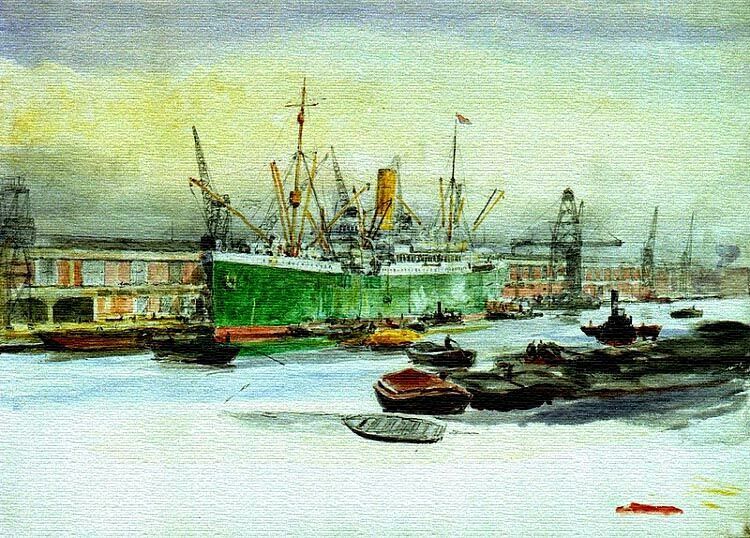
A delightful
work of art of the S.S. Euripides with her original green hull berthed at
This fine work of art was by the late; William Lionel Wyllie
In addition the “Euripides” had a double bottom for the full length of her hull. Her hull was divided’ into watertight compartments, in order that she could remain afloat if any two were fully flooded.
The S.S. Euripides was technically a two class ship, even though she did offer an immigrant Steerage class, which would be used whenever there was a need.
First class facilities were located on the following decks; Bridge Deck, Boat Deck, Main Deck and Awning Deck. Whilst Third Cass was on located the Poop and T’ween Decks. The space for the 750 Steerage passengers would most likely have been in two converted holds, which was done in a good number of ships in those days, for I could not located any other permanent accommodation on board.
Her holds were refrigerated and had a capacity for 245,593 cubic feet of cargo. There were a total of seven hatches, served by 19 winches.
The “Euripides” had three screws, which were driven by a pair of four-cylinder triple-expansion steam engines which drove her port and starboard screws. And an exhaust steam engine, from low-pressure cylinders, powered a low-pressure steam turbine that drove her middle screw. The combined power output of her three engines was rated at 1,401 NHP and gave her a service speed of 15 knots.
Interiors and facilities:
Her First Class facilities were pleasant and well finished with some touches of fine dark timber touches ivory walls and ceilings and fine furnishings. Sadly, I do not have many photographs of her Public Venues, but those I do will provide a general picture of what she was like on board, and what she type of ship she was to sail on!
I will commence with the First Class Venues and Cabins, then the Third Class, but sadly there is nothing available on the Steerage accommodations, which is usually very basic located in the bow section and sleeping venues was located in large dormitories, which was often in converted holds, for steerage would only be carried when requested and was not a regular transport for the ship.
First Class:
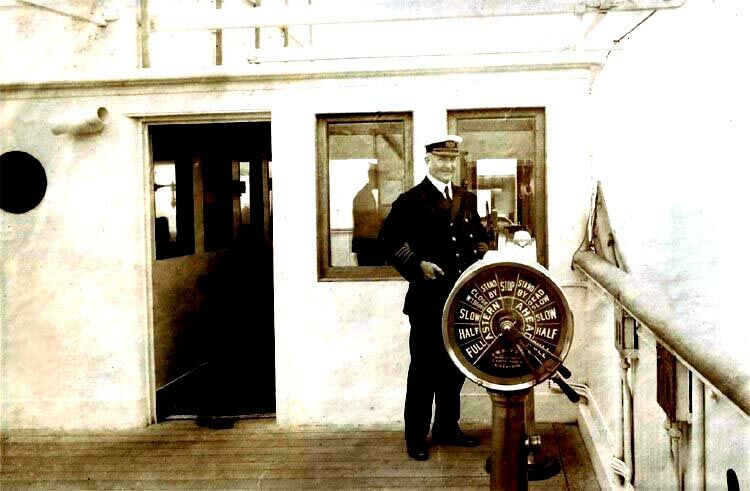
Not a First
Class facility, but it is nice to see that the Captain ensures that you will
get there safely!

Sun Deck
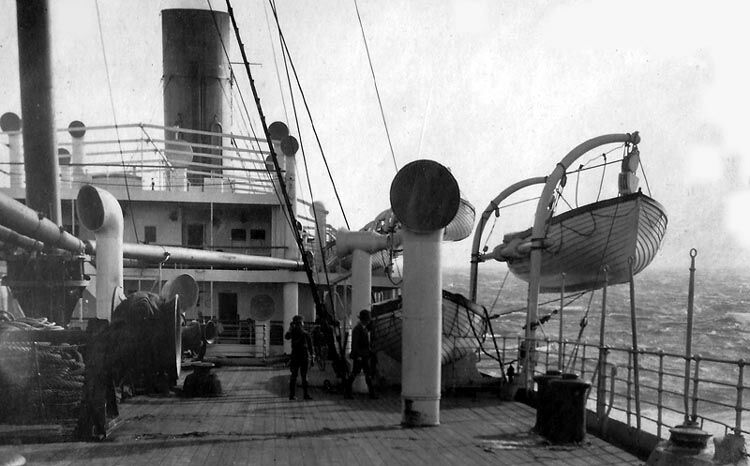
Boat Deck aft
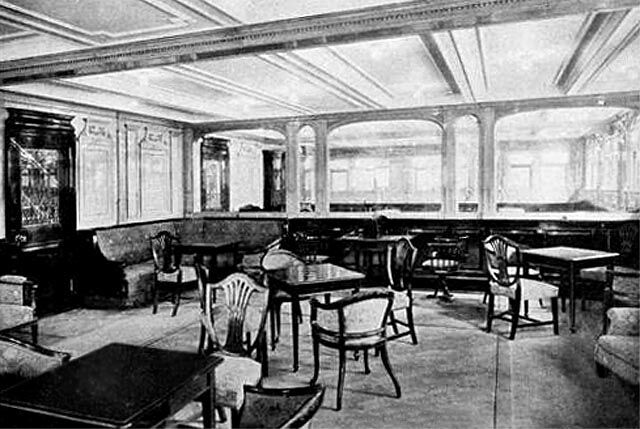
Above & below: This intimate Lounge is dived with the Library and writing Room
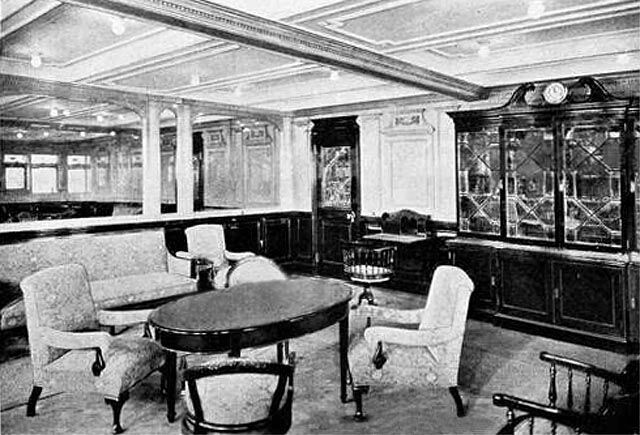
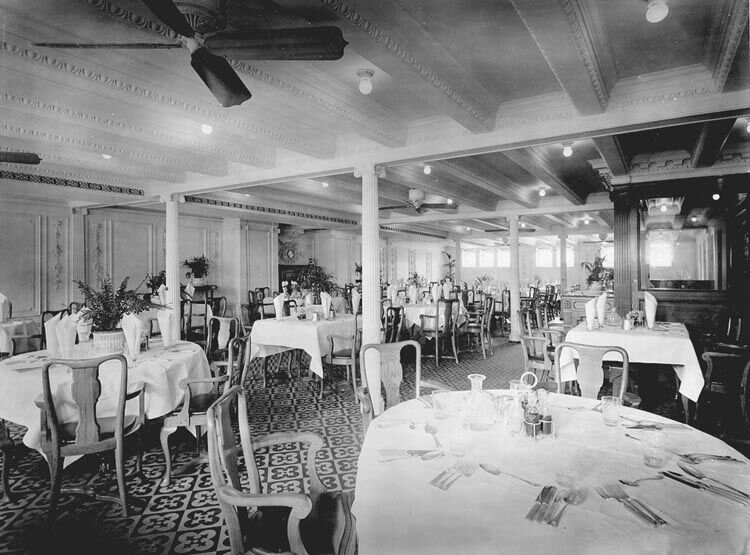
The beautiful
Dining Saloon
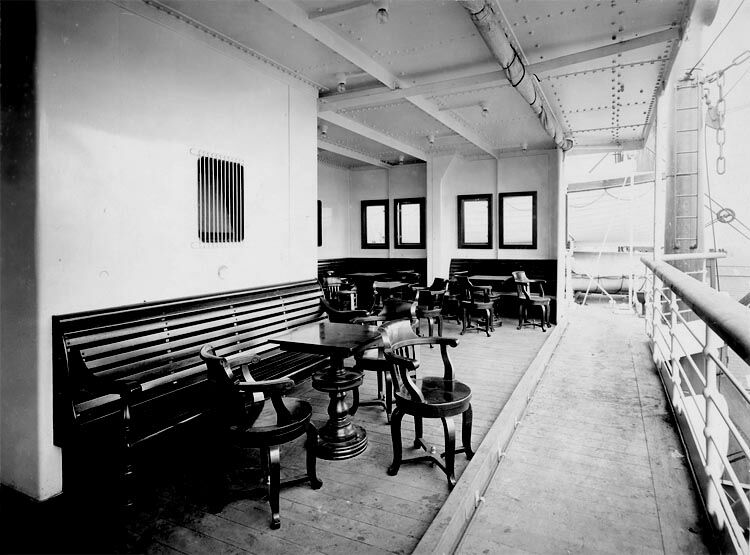
A popular
deck space for having a drink, or just to read a book
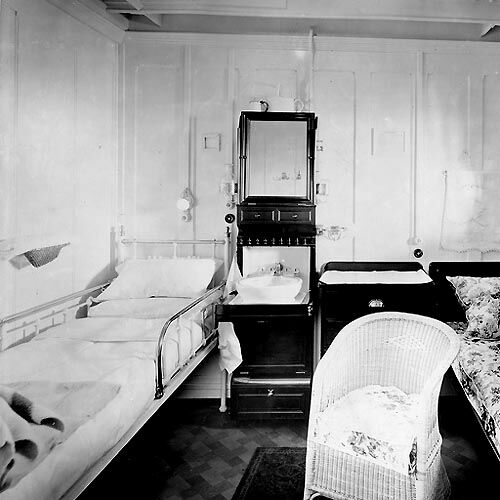
An inside two
bed cabin
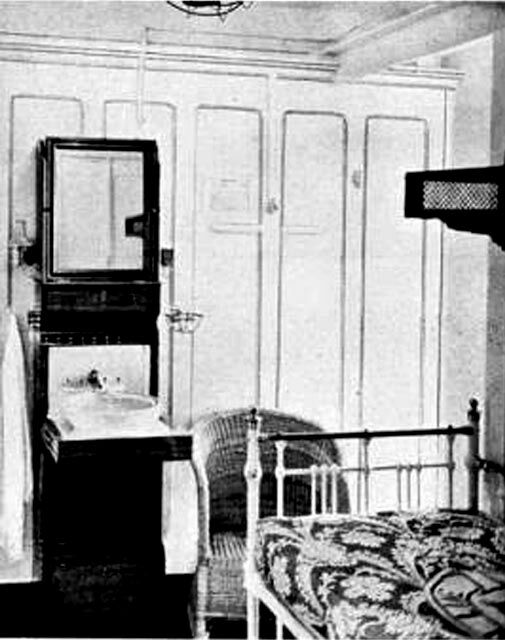
A single cabin
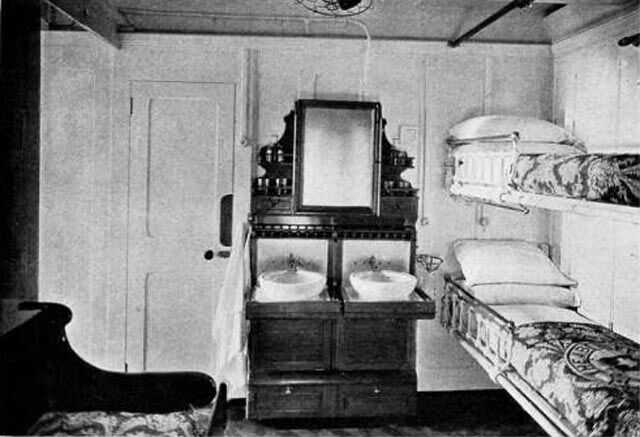
A two or
three berth cabin

The ships Gym
Third Class:
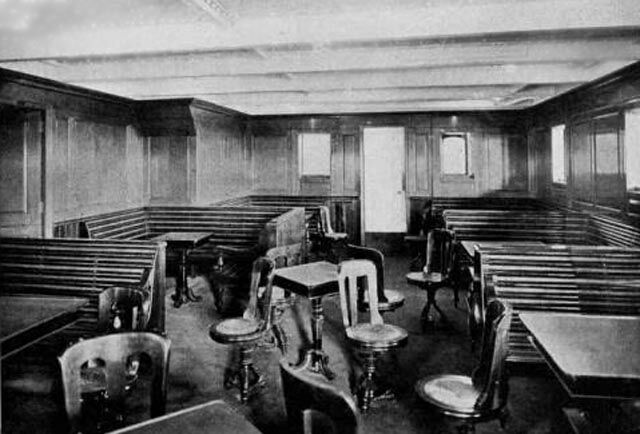
The Smoking
Room, there was a pleasant Lounge and Dining Room available as well

The Promenade
Deck and aft deck
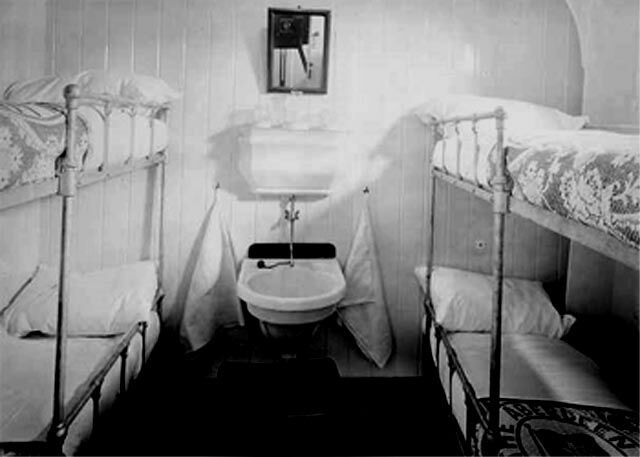
A typical 4
Berth cabin
*********************
Her Maiden voyage:
Aberdeen Line
was built to operate scheduled services between
S.S.
Euripides departed
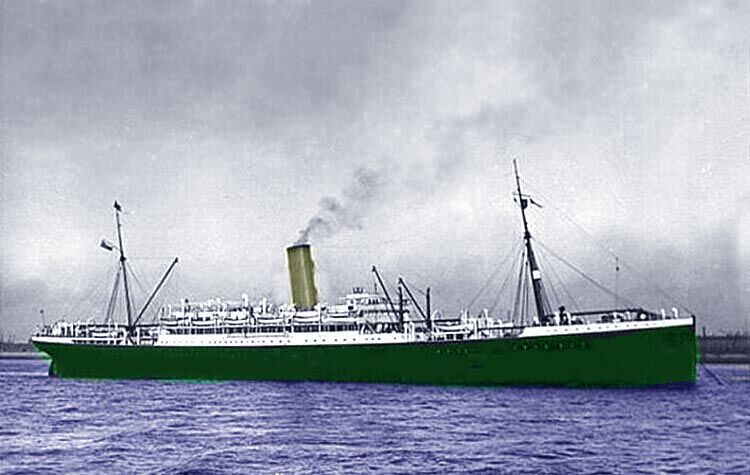
The S.S. Euripides is seen during her maiden voyage
She called at
*********************
World War One - H.M.A.T. Euripides:
Whilst in
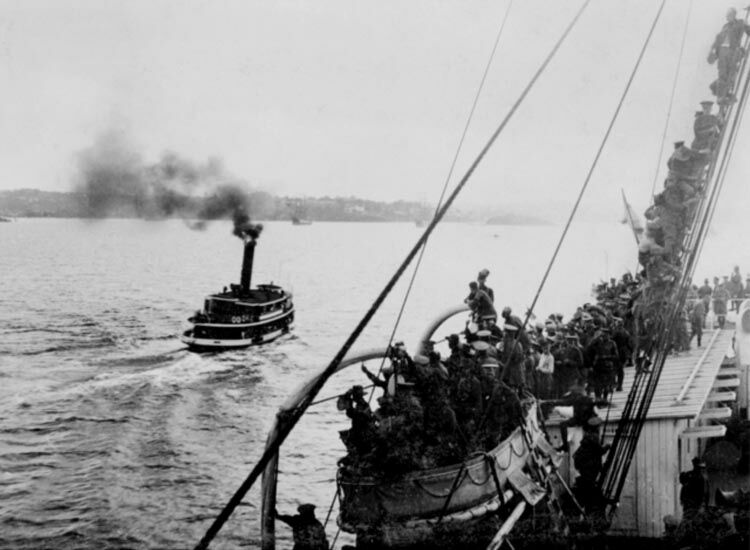
The
H.M.A.T. Euripides A14 is seen departing

Gun crew
aboard the troopship H.M.A.T. Euripides A14
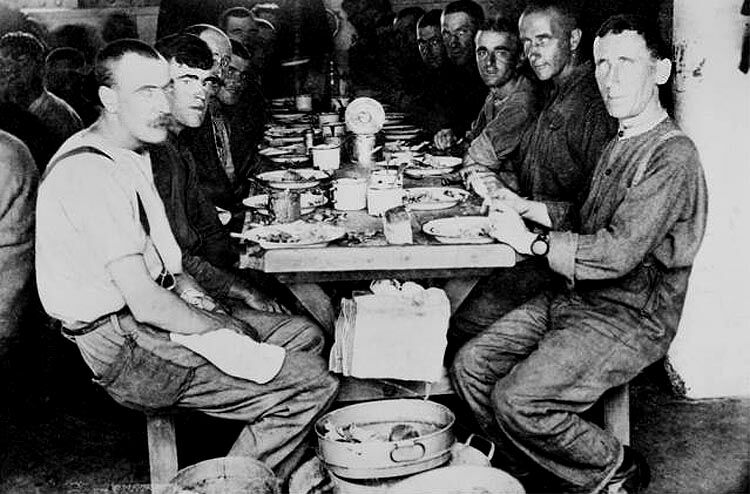
Some of the enlisted med are seen in the mess for a meal
She for
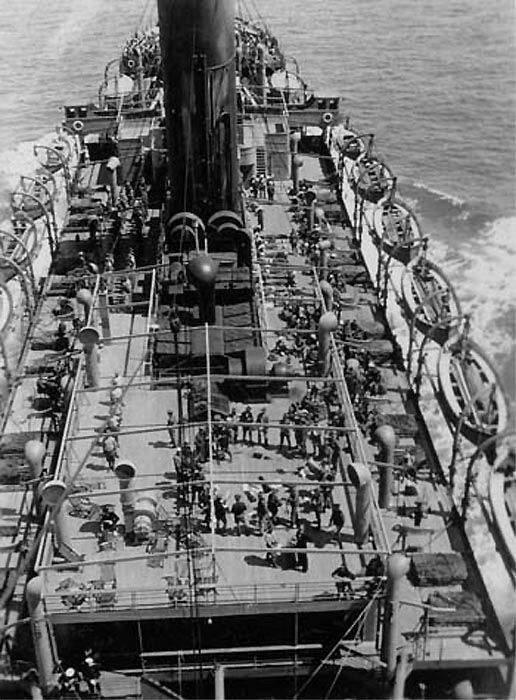
She is one
her way to the
Although she reverted to British government
control in 1915 and continued on the
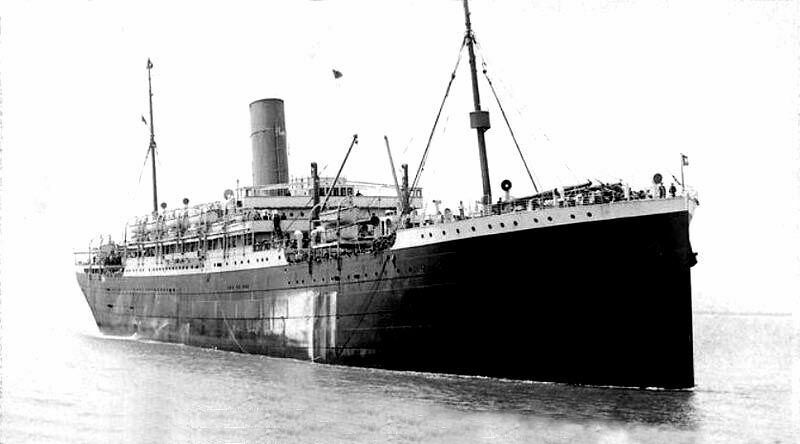
H.M.T.S.
Euripides is seen arriving at
She completed seven transport voyages from
During that time carried forty-four Infantry Battalion Reinforcements, the 6th Light Horse Regiment and the 11th Reinforcements, the 7th Light Horse Regiment, 12th Reinforcements, Light Trench Mortar Battery, 1st Reinforcements (Artillery) & Medical Officers.
Subsequent History:
From February 1919 she repatriated Australian troops, and during this including her war service, the H.M.A.T. Euripides steamed 208,307 miles and carried 38,439 troops.
H.M.A.T. Euripides A14 - listed Voyages:
Port
Other Voyages
May 10, 1915 from
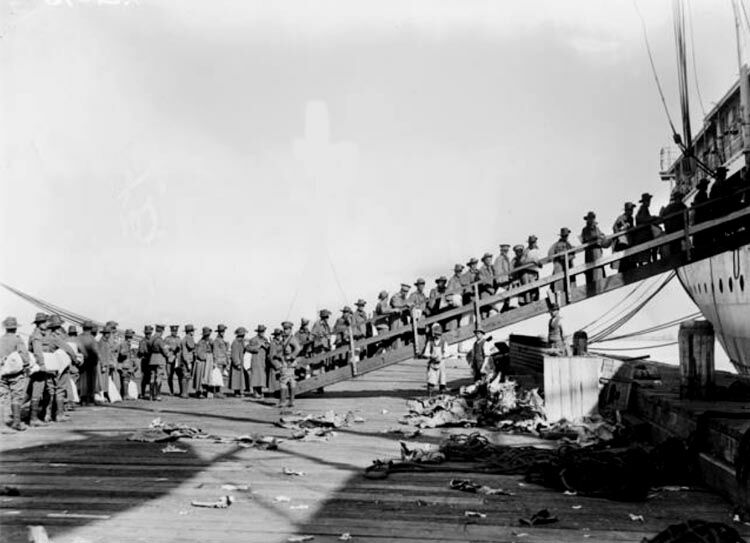
Troops
boarded the “Euripides” at
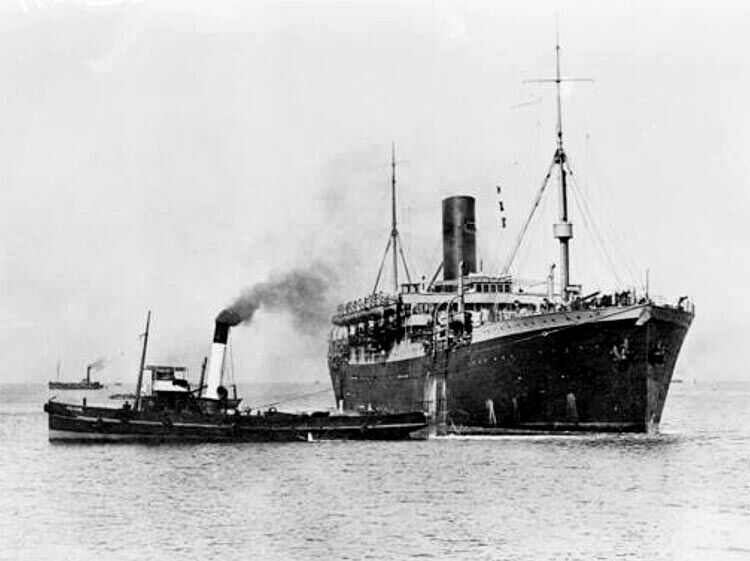
The
“Euripides” departed
November
2, 1915 from
May
1916 from
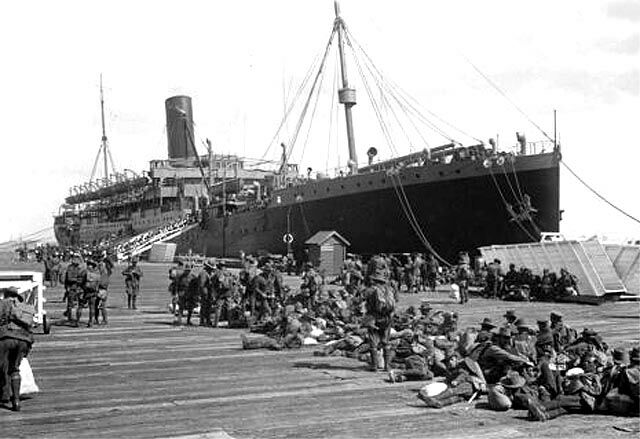
Troops
boarding, with other waiting to board the “Euripides” in May 1916
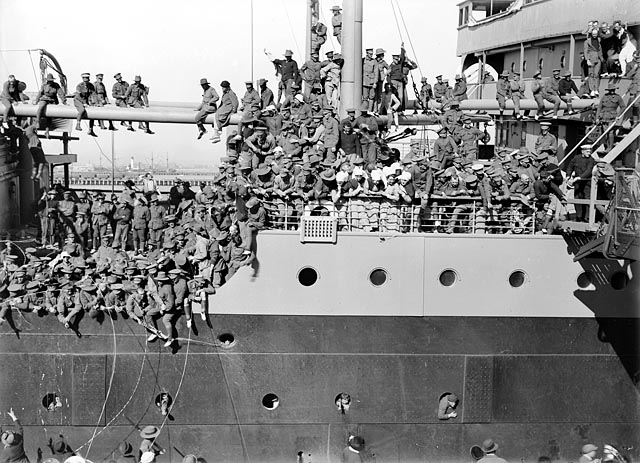
Nurses are
seen on board the “Euripides”
September 9, 1916 from
October
31, 1917 from
Early in 1919 she was given a radical change of war livery of light angled and curved stripping all over her grey hull, and she looked hideous to say the least during the final year of her troop ship duties!
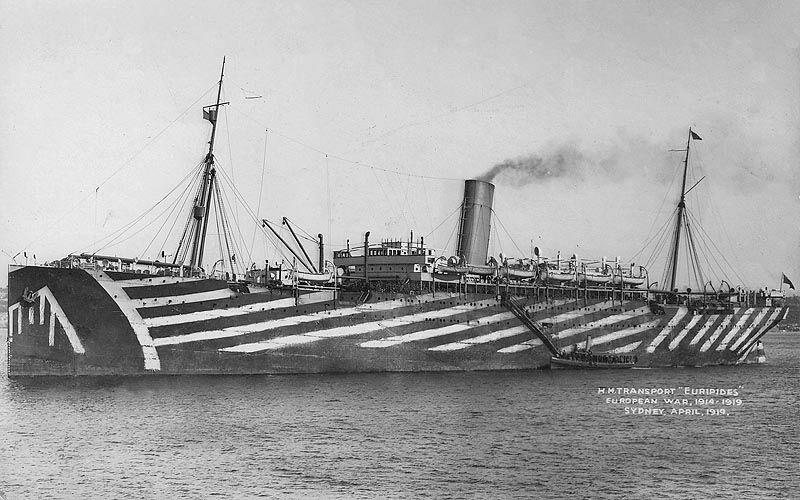
She is seen
in
In 1919 she basically returned to her regular
Post War:
After her troop
service “Euripides” was overhauled at
In 1922 the company
took delivery of a pair of new
12,300 GRT liners, Sophocles and Diogenes. In
March 1923 Euripides' route was changed to
serve Southampton instead of
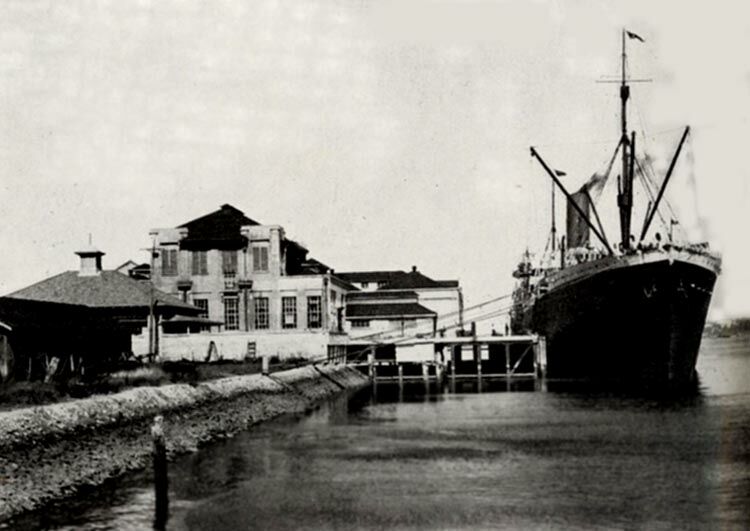
S.S.
Euripides is seen at the Brisbane Hamilton wharfs cold stores loading butter
bound for
In
1927 Euripides was laid up for five months in the Firth of
Clyde. She then went into a service between Liverpool and
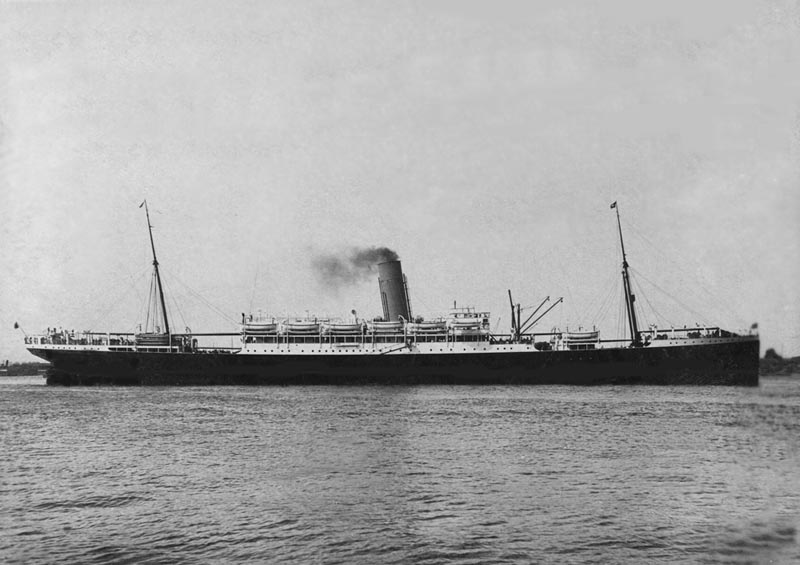
The
“Euripides” is seen arriving at
In November 1929, management was transferred to the “White Star Line”, but “George Thompson & Co Ltd” (Aberdeen Line) continued to be her owner. Also in 1930 the “Euripides was” equipped with wireless direction finding apparatus.
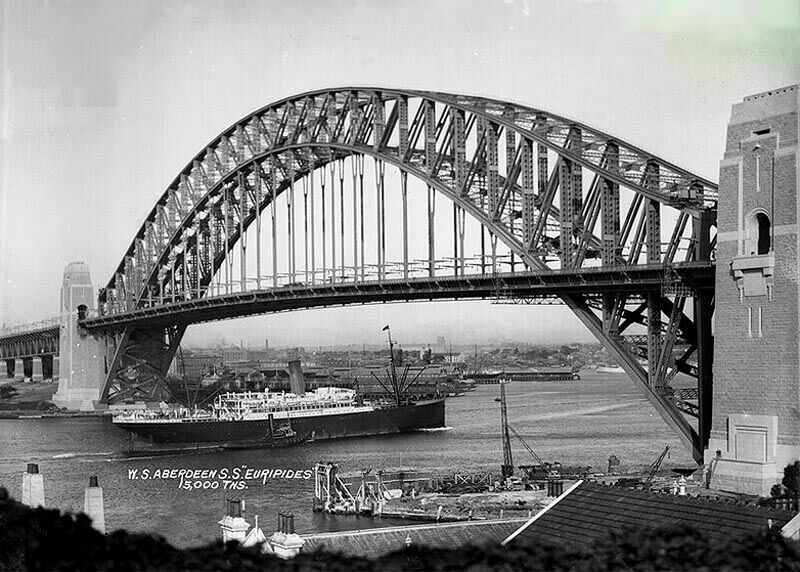
Photograph Above: She entered
With “White Star Line” being in huge financial difficulties, due to its owner Lord Kylsant having overspent so greatly and being in a huge debt, it ended up that on July 20, 1931 the “Royal Mail Case” opened at the ‘Old Bailey’, which sadly led to the collapse of the White Star Line’s parent company The company being unable to repay its debt, and its ships serving on the Australian route were sold to a new company, the “Aberdeen and Commonwealth Line Ltd” in 1933
Shaw, Savill & Albion:
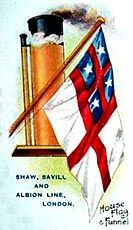
However, it was
in July 1932 that “Shaw, Savill & Albion” took over the
“Aberdeen Line” and all their ships, including the
“Euripides”, which was sent to the yards of “R. & W.
Hawthorn, Leslie and Company, Ltd” at Hepburn,
Her First Class
cabins were enlarged and greatly modernised when completed there were now
accommodated 200 passengers in an excellent Cabin Class. In addition a new
modern fully equipped Gymnasium as well as Swimming Pool was added. Whilst
the old third class section was completely converted into additional cargo
space, increasing her total refrigerated cargo capacity to 442,680 cubic feet, 12,535 m3. During
the refit, she was converted from coal to oil burning. Her refit saw her
tonnage change to 15,128 GRT and 9,461 NRT. “Shaw,
Savill and Albion” had renamed her, “Akaroa” and
she was now registered at
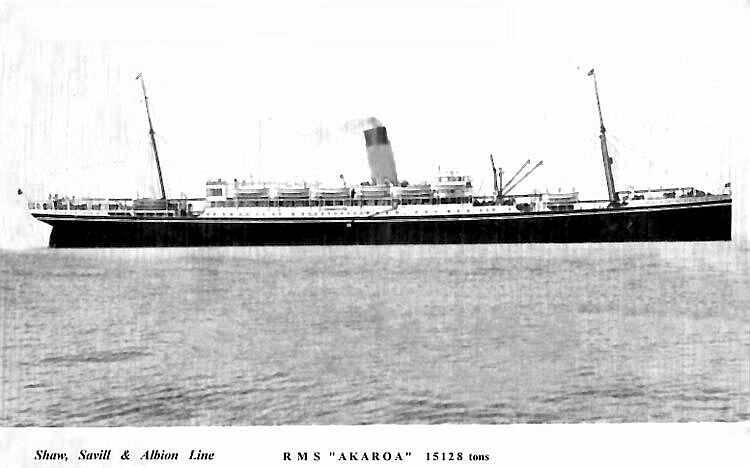
A Shaw, Savill & Albion postcard of their newly acquired and refurbished R.M.S. Akaroa
Her new regular
service was from Southampton to
“Shaw
Savill” offered 100-day holidays from
The precise route was: Southampton,
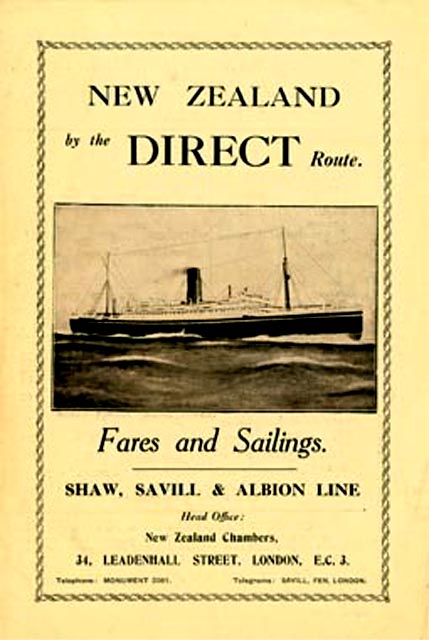
Fares & Sailings for 1933 for their three ships on this service
R.M.S. Akaroa, S.S. Mataroa & S.S. Tamaroa
S.S. Akaroa
departed Southampton on her first voyage to
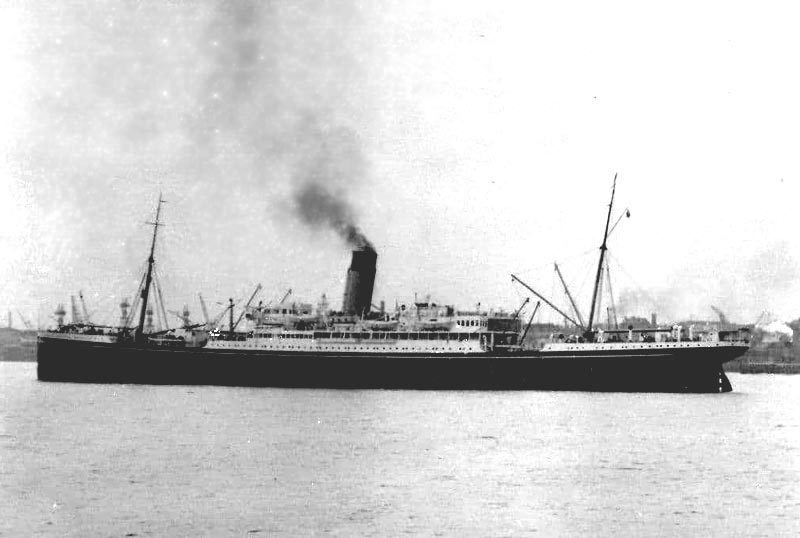
The R.M.S. is seen
during on her maiden voyage to
In 1934 the “Akaroa’s” code letters ‘JFRC’ were withdrawn and she was given the call sign ‘GMLP’. And later in the 1934 she was also equipped with an echo sounding device.
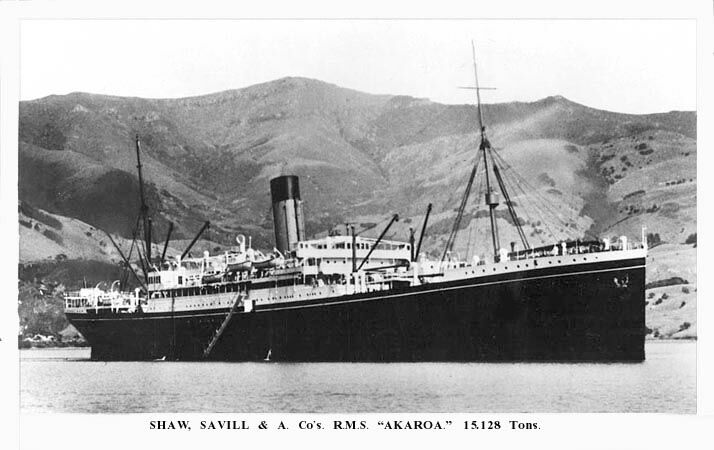
Another fine postcard of the R.M.S. Akaroa
Then in
1936 whilst back in the

The “Akaroa”
is seen berthed at Wellington New
World War 2:
On September 1,
1939, the day the Second World War began, and
the “Akaroa” departed Southampton for

A postcard of the
R.M.S. Akaroa at
Throughout the
war the “Akaroa” continued her services between
Nine of her
eastbound transatlantic crossings were with ‘HX
convoys’. Five of her westbound crossings started with ‘ON
convoys’, three started with ‘OS convoys’, and in 1944
she made one westbound Atlantic crossing to
Then after the
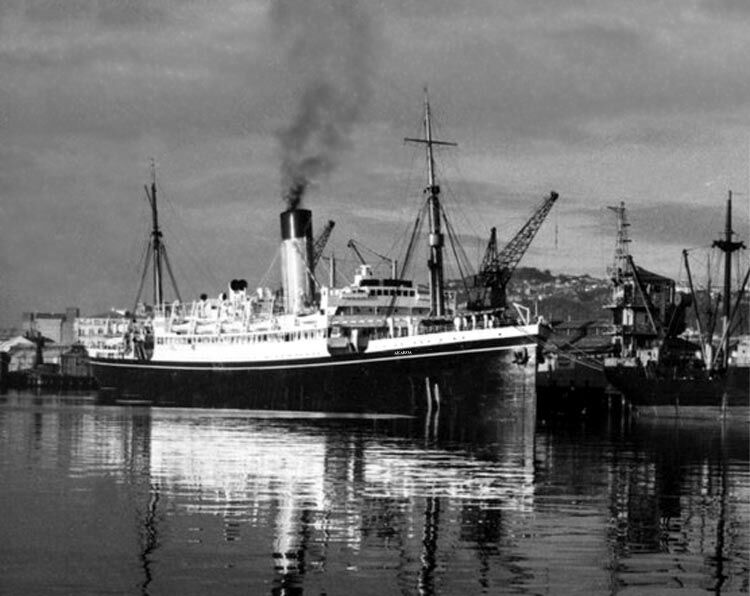
She is seen in a port
Visiting many Ports:
During the
war she would served other ports of call as required, calling at
On one
westbound voyage from Liverpool in November and December 1940 she went to
Sydney and Melbourne instead of
On another
westbound voyage in 1944 she called at
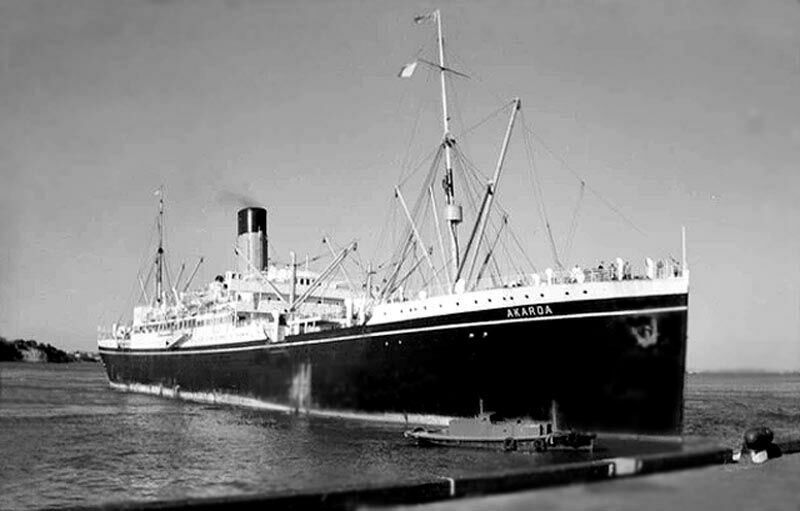
The R.M.S. Akaroa is about to dock at Hamilton Wharf Brisbane, Queensland, Australia
On February 28,
1943 the “Akaroa” departed
From
Later in
1943 the “Akaroa” sailed from
In
1945 “Akaroa” made one voyage to
Her Final Ten Years:
In the second
half of 1945, S.S. Akaroa was overhauled and refitted on
the River Tyne and returned to service between
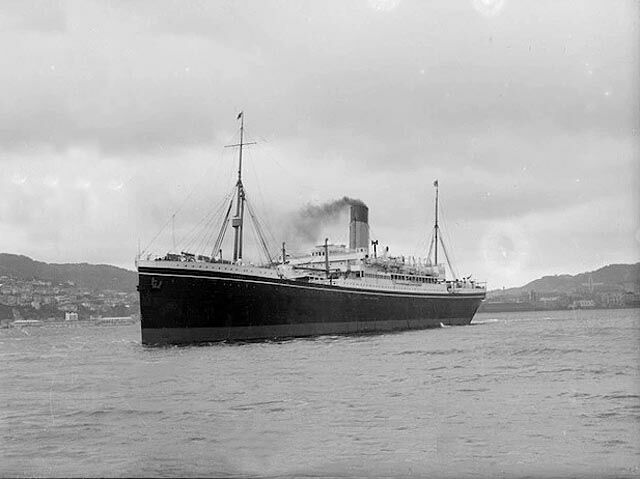
R.M.S. Akaroa seen
in
The S.S. Akaroa
commenced her very last voyage from
*********************
Name’s: S.S.
Euripides 1914 - 1932.
“ R.M.S.
Akaroa 1932 - 1954.
Owner: George Thompson & Co Ltd - 1914.
“ Shaw, Savill & Albion Line - 1932.
Operator:
“ White
Star Line, 1929.
“ Shaw, Savill & Albion
Line, 1932.
Built by: Harland
& Wolff,
Yard No: 439.
Launched: January 29, 1914.
Completed: June 6, 1914.
Sea Trial: June
14, 1914.
Maiden Voyage: July 1, 1914.
Pennant No: A14
- 1914–17.
Call Sign: MSE
by 1918.
Code letters: JFRC to 1933.
Call Sign: GMLP
1934 onward.
“
Type: Passenger-Cargo Liner.
Tonnage:
1914: 14,947 GRT,
9,399 NRT, 25,000 Displacement
1932: 15,128 GRT,
9,461 NRT.
1945: 15,320 GRT.
Length: 569 ft - 173 m.
Beam: 67.4 ft - 20.5 m.
Draught: 32.11 ft - 10.03 m.
Installed Power: 1,401 NHP.
Engines: 2 × triple-expansion steam engines.
. 1 × low-pressure steam turbine.
1932: Converted from coal to
oil burning.
Propellers: Three Screws - 8,300 IHP.
Speed: 15 knots service speed,
16.5 maximum speed.
Accommodations:
1914: 140 First Class, 334 Third
Class passengers.
. 750
Steerage (only
when requested).
1932: 200 Cabin Class passengers.
1946: 190
Cabin Class “ .
Cargo:
1914: 245,593
cubic ft, with refrigerated cargo.
1932: 442,680
cubic ft, with refrigerated cargo.
1914 WW1: Troop
Ship No.1.
1939 WW2: Troop
Ship No.6.
Sensors and processing systems
“ Echo
sounding device - from 1934.
“ Gyrocompass - from 1936).
Fate: Scrapped by “Jos de Smedt
&
Remembering the …
S.S. Euripides & R.M.S. Akaroa
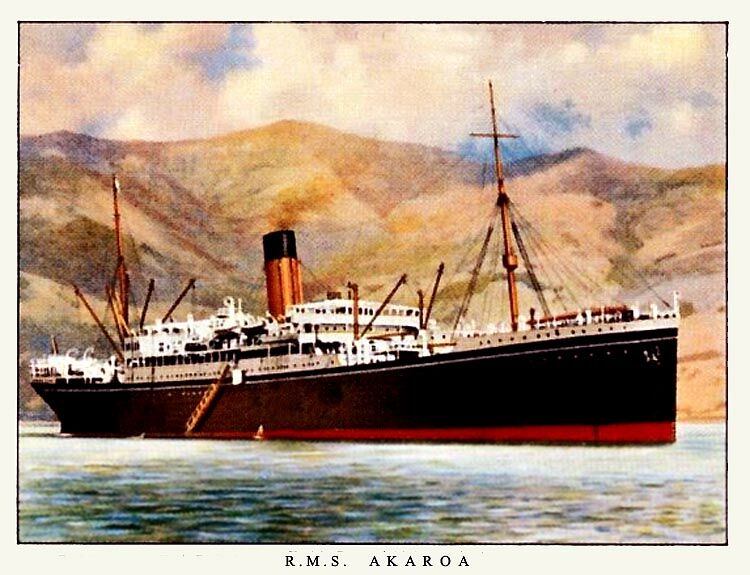
A fine artistic
postcard of the R.M.S. Akaroa, ex S.S. Euripides
“Blue
Water Liners sailing to the distant shores.
I watched them come, I watched
them go and I watched them die.”
Featuring over 1,435 Classic Passenger Liners, Passenger-Cargo Liners & Classic Cruise Ships!
Or ENTER HERE
For interest: Sadly an email service to ssMaritime is no longer available, due to the author’s old age and chronic illness as well as being disabled, etc. In the past ssMaritime received well over 120 emails per day, but Mr. Goossens can no longer handle same. He sincerely regrets this!
*********************
ssMaritime.com & ssMaritime.net
Where the ships of the past make history & the 1914 built M.S. Doulos Story.
The Author has been in Passenger Shipping & the Cruise Industry for well over 60 years
In addition he was the founder of “Save the Classic Liners Campaign” in 1990.
Please Note: ssmaritime and associated sites are 100% non-commercial and the author seeks no funding or favours of any shape or form, never have and never will!
Photographs on ssmaritime and associate pages are by; the author or from the author’s private collection. In addition there are some images that have been provided by Shipping Companies and private photographers or collectors. Credit is given to all contributors. However, there are some photographs provided to me without details regarding the photographer/owner concerned.
This notice covers all pages; although, and I have done my best to ensure that all photographs are duly credited and that this notice is displaced on each page, that is, when a page is updated!
ssMaritime is owned & © Copyright by Reuben Goossens - All Rights Reserved

